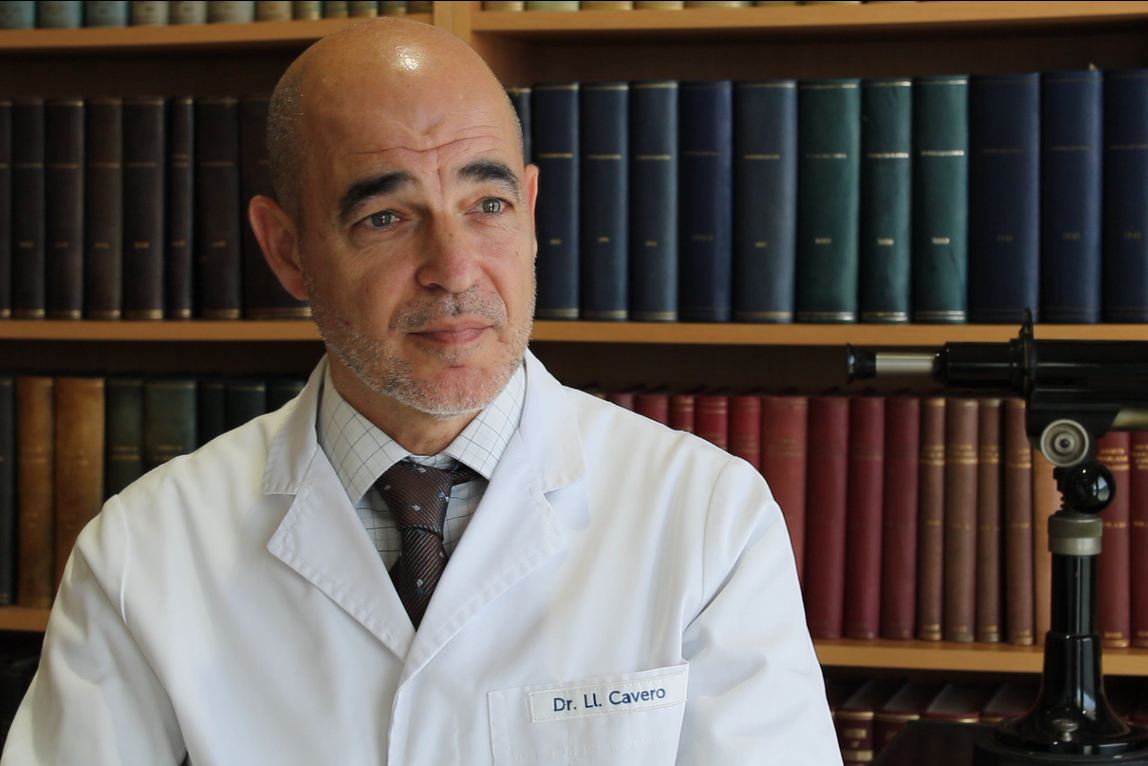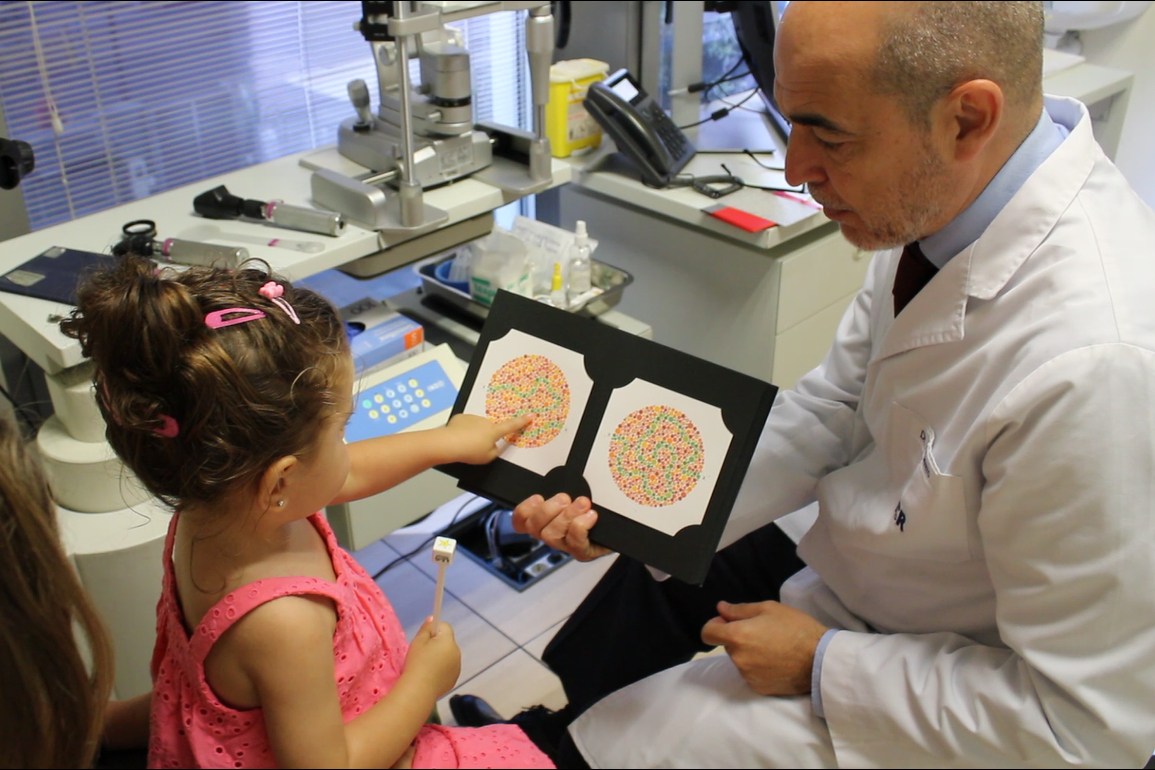
Probably childhood myopia is one of the most important ones. Myopia is currently affecting a 23% of the population and the predicition is that this percentage will be 50% by 2050.
This refractive error has a lot of potential of being addressed during childhood, when the eyes are in development. That is why the pediatric ophthalmology and optometry teams at ICR deeply work on it, with the purpose to stop the progress of myopia during the childhood, therefore reducing its complications during adulthood.
Myopia is a default caised y an excessive eye length or a too curved cornea or crystalline lens. This makes images project before the retina, instead of on its plane. As a consequence, the patient who suffers it sees everything that is at some distance blurry, and has to come very close to see it right.
On the one hand, childhood myopia limits the patient in their daily activitu, since there is a strong dependance on glasses (or contact lenses if the patient is over 12) from 0.75 diopters.
On the other hand, a greater myopia during childhood entails more complications in the long term; it increases the risk of cataracts, glaucoma, strabismus, retinal detachment… That is why it is very important to us to make sure that children have as little myopia as possible.
We currently have several possibilities: pharmacological and in the form of optic treatments, such as glasses or contact lenses that allow us to stop de progression of myopia. In fact, we are capable of stopping its progession by a 50%; meaning that a patient with an increase of one diopter every year could increase it only by half. It can seem little, but if we make it extensible to the 4-5 years during which there is more risk of myopia increase, we eventually manage to stop its progress until 2 or 3 diopters. This will be important during the patient’s adult age, but it will also bring a higher life quality during their childhood.
When the patient is older, they can consider undergoing refractive surgery in order to correct myopia and reduce the dependence on glasses, of course. But it must be taken into account that the surgery offers much better results when there is less myopia.
Yes, as medical professionals we can prescribe a treatment with atropine eye drops, which is currently the most effective treatment to stop myopia and in which we are pioneers at ICR. We also work with new contact lens designs, such as orthokeratology, and glasses, such as peripheral defocusing glasses, which prevent myopia from progressing so much.

There are several tips that can be followed in order to reduce the risk of developing myopia, such as reducing screen time, make sure that the child spends at least 8 hours a week outdoors or ensuring that they sleep enough hours and have a healthy diet. Moreover, it is very important that families lead by example of healthy habits.
Once myopia has presented itself, as of today we can’t remove it in a pediatric age. That is why we need to strongly emphasize the importance of ophthalmologic check-ups in kids, even if they don’t express any discomfort. With some of the tests performed during these check-ups, we can detect myopia risk before it appears and/or treat it at an early stage.
Several factors can give us some clues, such as if the biological parents already have myopia, but we always perform tests that help us define it, such as biometry.
Furthermore, from ICR we are working on a more efficient tool to detect childhood myopia at an early stage: the height-axis rate. It is an indicatior that will allow us to identify in which moment the height of the patient and the length of their eye stop growing synchronously and eventually produce myopia.
This is a study that is currently approved by the scientific board, but has not yet been carried out. To do so, we will take into account the results of the biometries performed at ICR (a test that we perform on all pediatric patients with myopia) and we will also measure the height of the children at each visit.
It is a prospective study, to analyze the parameters we need 6 years of growth of each patient, so the conclusions will be drawn in about 7 years. However, this study will have a very relevant scientific relevance.
A lot of research is being carried out with different drugs, gene therapy, methods to detect which children are most at risk of developing myopia and red light therapy. For now, it seems that in the future more work will be done with photobiomodulation, focusing on the effects that light can have on this issue.
This year we have two new appliances. First of all we have the Myah, a device that provides us with a lot of information about the child’s eye and allows us to compare all this data with very exhaustive normality graphs. This makes it easier for the specialist to make decisions for the patient’s treatment.
Secondly, we have the Reteval, an electroretinograph, a device that performs electrophysiological tests in a simpler way for the patient. Until now these tests had to be performed either under general anesthesia or with electrodes placed between the conjunctiva and the eyelid, which can be uncomfortable and made it difficult for children to cooperate. With this device the electrodes are placed on the skin, so that they are much more tolerable for the patient.
Yes, we already have the devices we have mentioned at ICR and we are using them. In our Department of Pediatric Ophthalmology we are very attentive to all the new developments in the prevention and treatment of myopia and we have the capacity to incorporate effective options in a pioneering way, always with scientific rigor.
We are very interested in children’s myopia, we have the means of diagnosis and treatment and we have the trust of many families, who allow us to accompany children on this path.

Contact us or request an appointment with our medical team.